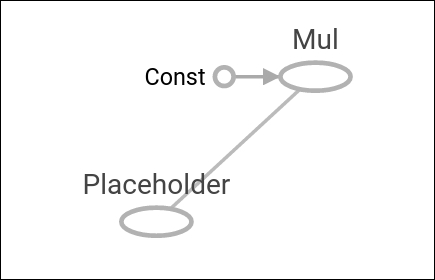Now that we can put objects into our computational graph, we will introduce operations that act on such objects.
To start a graph, we load TensorFlow and create a session, as follows:
import tensorflow as tf sess = tf.Session()
In this example, we will combine what we have learned and feed in each number in a list to an operation in a graph and print the output:
First we declare our tensors and placeholders. Here we will create a
numpyarray to feed into our operation:import numpy as np x_vals = np.array([1., 3., 5., 7., 9.]) x_data = tf.placeholder(tf.float32) m_const = tf.constant(3.) my_product = tf.mul(x_data, m_const) for x_val in x_vals: print(sess.run(my_product, feed_dict={x_data: x_val})) 3.0 9.0 15.0 21.0 27.0




